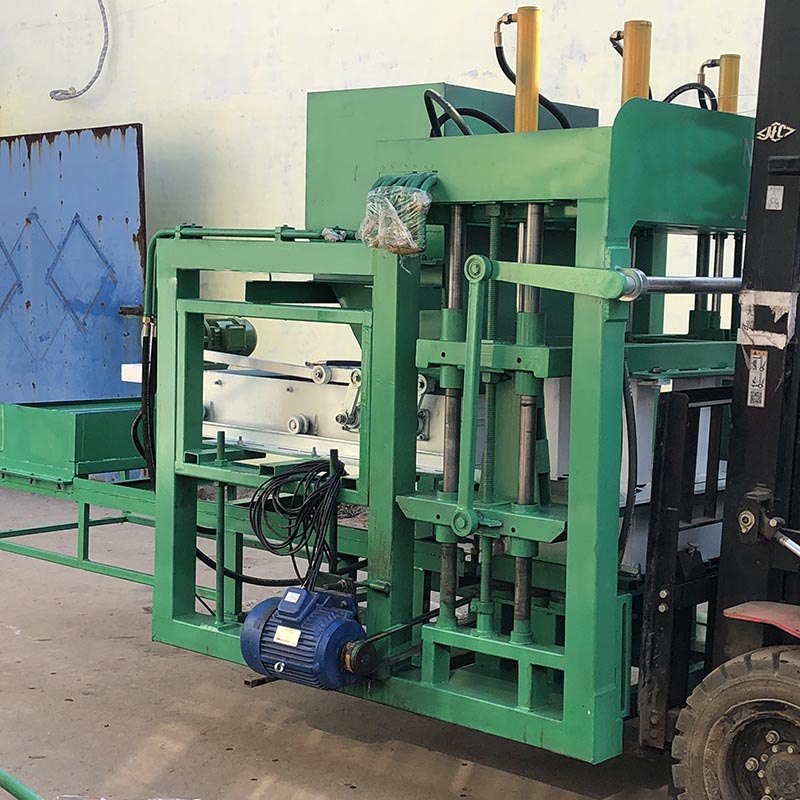
Image source:Aiweiblockmachine
Introduction
South Africa’s construction industry is marked by dynamic growth, fueled by urbanization, infrastructure development, and a demand for sustainable building practices. At the heart of this transformation lies the brick making machine manufacturing sector, a cornerstone that supplies the essential machinery driving the nation’s construction progress. In this article, we delve into the intricate interplay of challenges and opportunities faced by brick making machine manufacturers in South Africa. From technological advancements to market dynamics, these factors shape the trajectory of the industry’s growth, innovation, and sustainability.
1. Competitive Landscape: Navigating Global and Local Markets
Global Players: Brick making machine manufacturers in South Africa operate in a competitive arena that includes both domestic and international players. Global manufacturers bring expertise, advanced technology, and the ability to tap into international markets.
Local Advantage: Local manufacturers understand the unique demands and conditions of the South African construction industry. This advantage enables them to tailor their products and services to meet specific local requirements.
Opportunity: Collaborations between local and global manufacturers can foster knowledge exchange, technology transfer, and innovation, benefiting both parties and the industry as a whole.
2. Technological Advancements: Keeping Pace with Innovation
Constant Evolution: The rapid evolution of technology drives innovation in brick making machine manufacturing. Manufacturers must stay up-to-date with the latest advancements to remain competitive and provide cutting-edge solutions.
Investment in Research and Development: Embracing research and development is essential for manufacturers to develop new technologies, improve existing products, and address emerging challenges.
Opportunity: Manufacturers that invest in research and development are well-positioned to introduce breakthrough technologies that enhance efficiency, sustainability, and product quality.
3. Sustainability and Environmental Concerns: The Green Imperative
Eco-Friendly Solutions: The construction industry’s increasing focus on sustainability and environmental consciousness drives the demand for eco-friendly brick making machines.
Energy Efficiency: Manufacturers that design and produce energy-efficient machines, such as those powered by renewable energy sources, align with the industry’s commitment to reducing carbon footprints.
Opportunity: Manufacturers that prioritize sustainability not only contribute to a greener construction sector but also attract environmentally conscious customers, giving them a competitive edge.
4. Access to Advanced Technology: Balancing Cost and Innovation
Technological Investments: The adoption of advanced technology often requires substantial financial investment, particularly for small and medium-sized manufacturers.
Balancing Act: Manufacturers must weigh the costs of investing in advanced technology against the potential benefits, such as improved efficiency, quality, and market positioning.
Opportunity: Collaborative efforts between manufacturers and financial institutions can provide access to funding or incentives that enable smaller players to invest in technology upgrades and remain competitive.
5. Skills Gap: Building a Skilled Workforce
Skilled Workforce: The operation and maintenance of modern brick making machines require skilled technicians and operators who understand the intricacies of the technology.
Training Programs: Manufacturers can bridge the skills gap by partnering with educational institutions to offer training programs that equip individuals with the necessary expertise.
Opportunity: Manufacturers that invest in training programs contribute to a skilled workforce, ensuring the efficient operation of their machines and fostering a sustainable talent pool for the industry.
6. Market Demand Fluctuations: Anticipating Construction Trends
Cyclical Nature: The demand for brick making machines is influenced by construction industry cycles, which can be subject to economic conditions and market trends.
Diversification: Manufacturers that offer a diverse range of machine types and models, catering to various construction needs, are better positioned to withstand market fluctuations.
Opportunity: Manufacturers that stay attuned to emerging construction trends can adjust their product offerings and strategies to align with evolving market demands.
7. Export Potential: Tapping into Regional Markets
Regional Expansion: The African continent presents opportunities for brick making machine manufacturers to export their products to neighboring countries with growing construction industries.
Market Assessment: Manufacturers must assess the regulatory, logistical, and demand aspects of target markets to ensure successful expansion.
Opportunity: By exploring regional markets, manufacturers can broaden their customer base, increase revenue streams, and contribute to the development of neighboring economies.
Conclusion
The challenges and opportunities for brick making machine manufacturers in South Africa form a tapestry that weaves innovation, sustainability, competition, and growth. By embracing technological advancements, prioritizing sustainability, addressing skills gaps, and navigating market dynamics, manufacturers can shape the future of the construction industry. As South Africa’s construction landscape continues to evolve, these manufacturers play a vital role in providing the machinery that drives progress, innovation, and sustainability in the built environment. Through collaboration, investment, and a keen understanding of the industry’s pulse, manufacturers can navigate the landscape with confidence and contribute to a thriving, resilient construction ecosystem.
